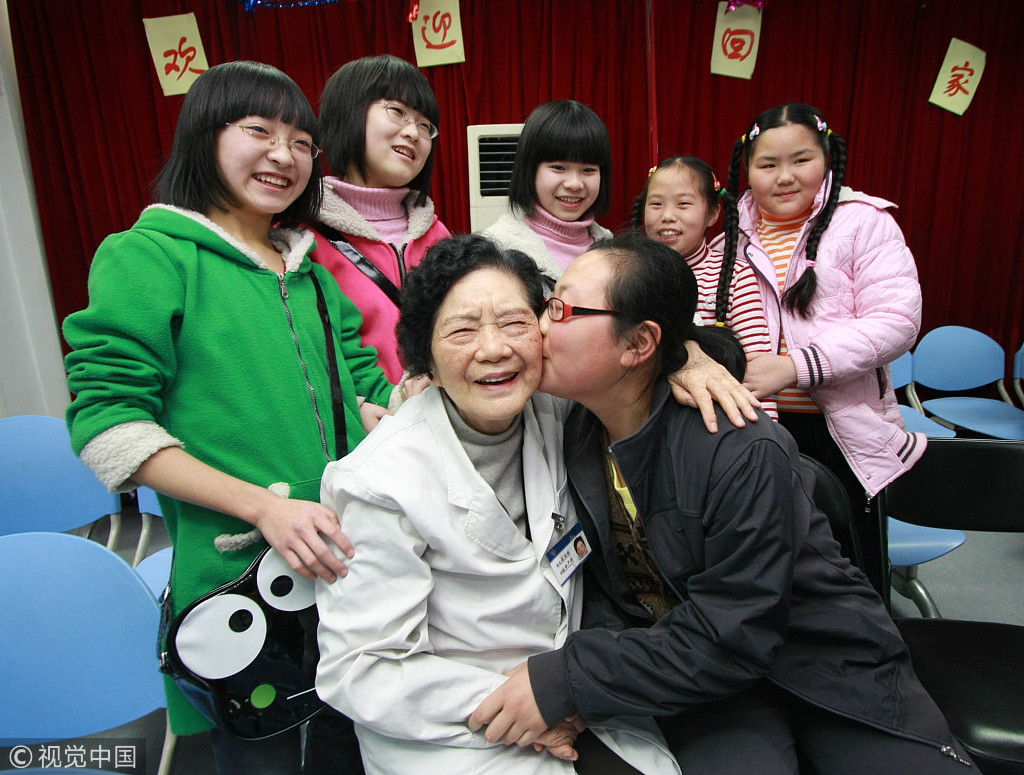From the People’s Daily app.
This is Story in the Story.
It was 30 years ago when the first test tube baby was born in China.
In 2012, the China Population Association statistics showed 40 million people with fertility issues, accounting for around 12.5 percent of the population at child-bearing age. So this explains the test tube baby surge.
Today, the number of test tube babies ranks at the top world-wide with up to 200,000 in-vitro fertilization (IVF) newborns every year.
Private hospital groups are now tapping into the market, which they say has seen "blowout growth."
In Shanghai, the number of in vitro fertilization procedures performed there have risen 10 to 15 percent annually and reached 50,000 last year.
Fueled by factors including the second-child policy, more women now desire to have a second child, but have passed their peak reproduction age and must resort to medical help, said Sun Yun, clinical director of Shanghai Renji Hospital's Center for Reproductive Medicine.
The center received some 250,000 patients with infertility problems last year, Sun said, adding that many were women born in the 1970s.
About 40 percent of IVF procedures performed in Shanghai last year were successful, Sun said.
But with advances in IVF come new problems such as the elderly who want to have a child, and embryos left behind at fertility just sitting in storage waiting to be claimed.
In Today’s Story in the Story, we will take a look at how China’s test tube technology and the impact ‘in vitro fertilization’ has had on Chinese society.

Zheng Mengzhu, the first test tube baby born in Chinese mainland, kisses 87-year-old doctor Zhang Lizhu, who brought her to the world on March 10, 1988, at Peking University Third Hospital, in Beijing, Feb 25, 2008. (Photo: VCG)
Professional career woman Zhang Li is just one of thousands of hopeful mothers in the country. At 38, she regrets having waited so long to give birth.
Her best bet is to have a baby via test tube. She's already spent 300,000 yuan ($45,000 US dollars) on the process.
Zhang said IVF procedures are expensive, and forces one skimp on everyday life needs. But she is prepared to spend more if necessary.
"I've never thought of giving up. We will continue, so long as our doctor says there is a chance," she said.
But problems have emerged along with IVF that some say are unique only to China.
A 67-year-old Beijing woman pregnant with twins through in vitro fertilization (IVF) said local hospitals refused to help her deliver her babies due to health risks.
Zhang Heng said local doctors suggested she abort the fetuses after being diagnosed with gestational hypertension, or high blood pressure - a condition that is potentially life-threatening for mother and child.
Zhang,who traveled to Taiwan to undergo IVF in June, said that local health authorities have since stepped in, telling hospitals to report if she requested a medical checkup.
Two Beijing hospitals confirmed that health authorities had notified them of Zhang's case.
"No hospital dares to treat me now," she said.
Zhang lost her only child who was 34 years old in a car accident four years ago.
After failing to adopt, Zhang and her husband decided on IVF.
However, Zhang said it was during a checkup at a Beijing hospital that she was diagnosed with pregnancy-induced high blood pressure.
"They told me last week that I should end the pregnancy," Zhang said.
Zhang was transferred to another hospital, where doctors also suggested she terminate.
For every IVF cycle, the hospital cultivates several embryos, implants two into the uterus, and the rest are frozen in liquid nitrogen tanks in the hospital.
Hospitals sign contracts with patients about the leftover embryos, which usually state that hospitals will keep the leftover embryos for a certain period of time, and if the patients don't have further requirements, hospitals can discard the frozen embryos after the period.
Many patients lose contact with the hospitals, so the leftover embryos become ownerless.
(Produced by Nancy Yan Xu,Lance Crayon, Raymond Mendoza, and Terry Guanlin Li. Music by: bensound.com. Text from China Daily and Global Times.)


